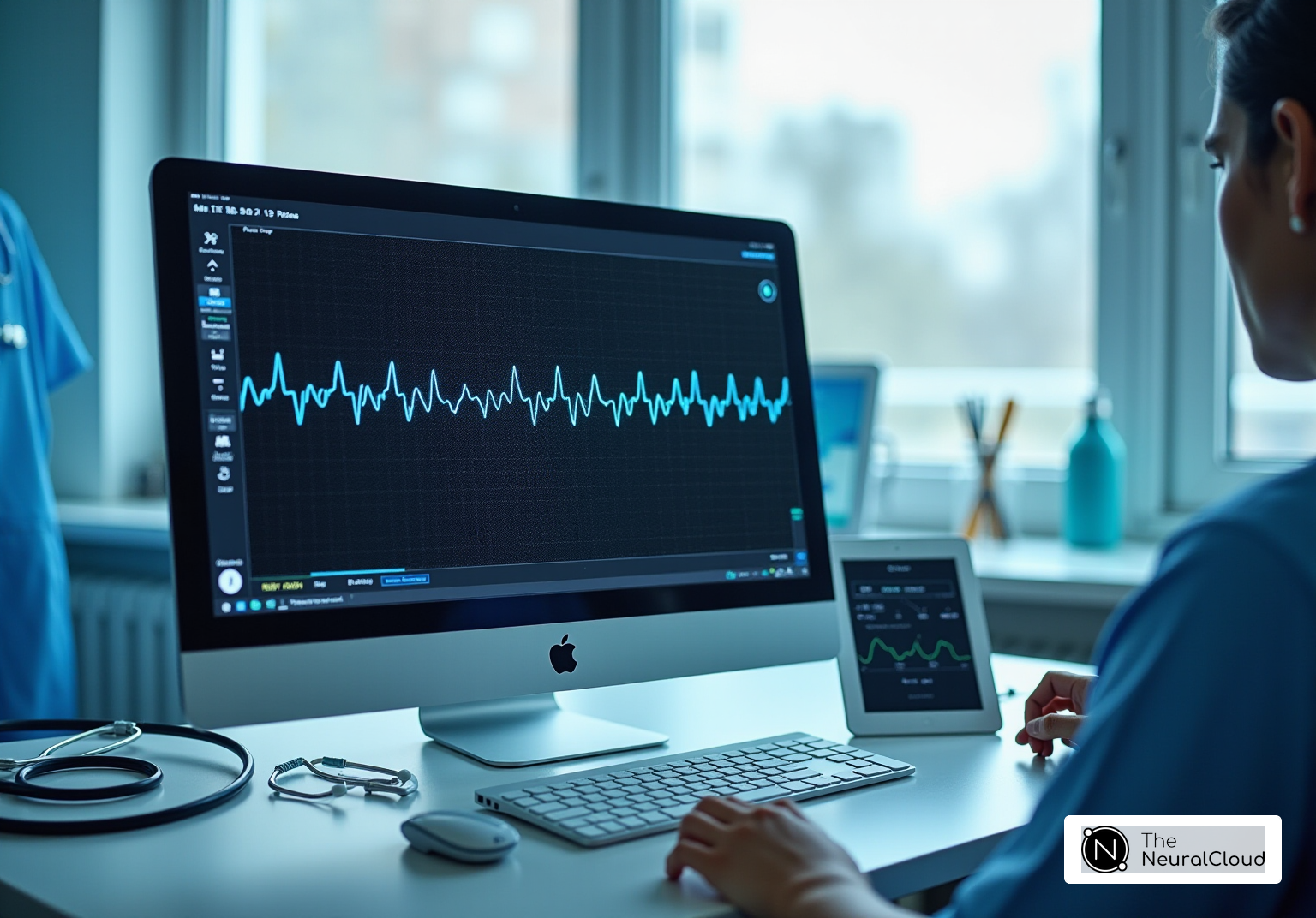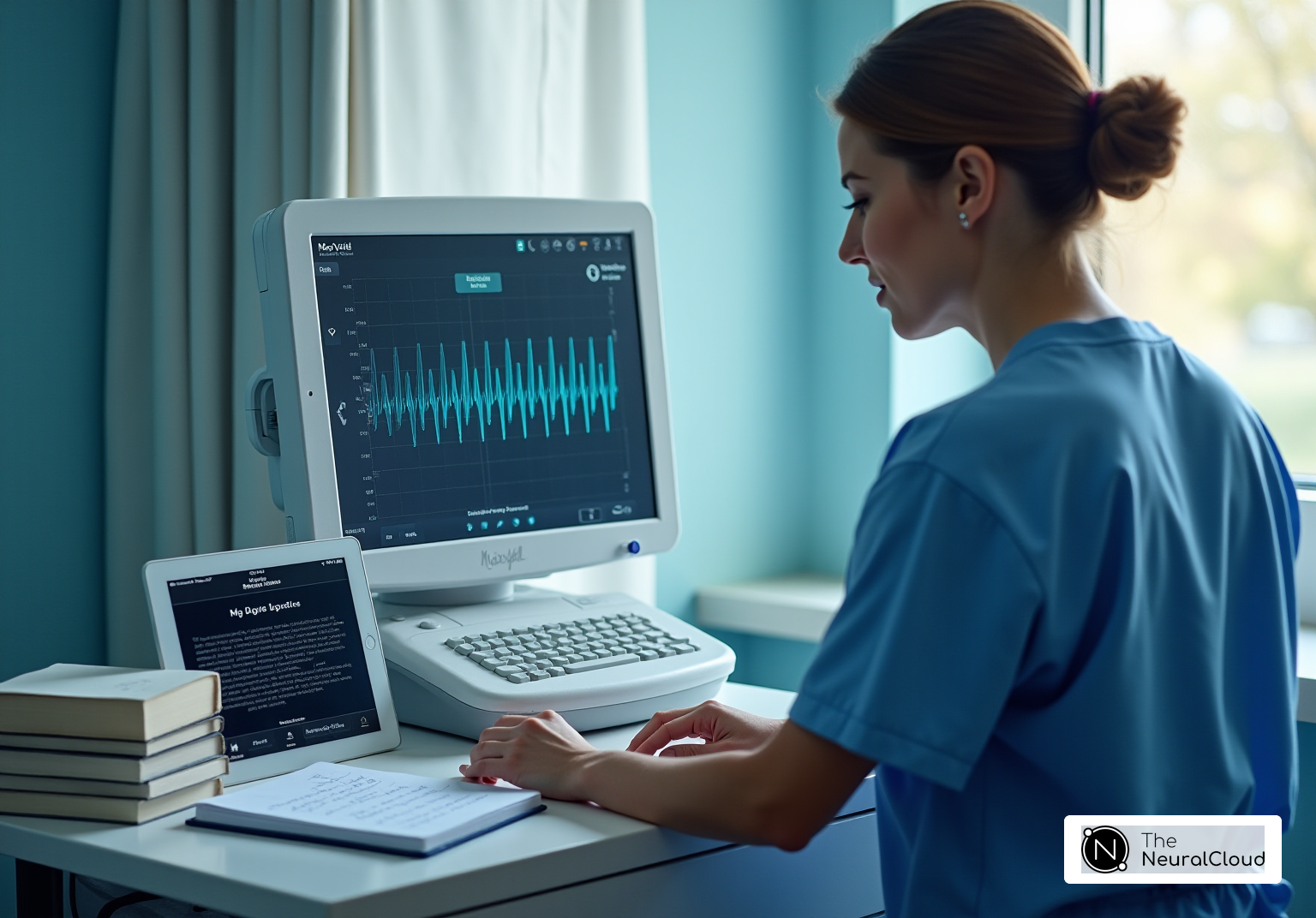Overview
ECG artifacts represent distortions in electrocardiogram signals that do not stem from the heart's electrical activity. These artifacts can lead to potential misdiagnoses and hinder accurate cardiac health assessments. This article underscores the significance of recognizing these artifacts and adopting effective reduction strategies. Proper skin preparation and secure electrode placement are critical measures that can substantially improve diagnostic accuracy and enhance patient safety.
Introduction
Understanding the nuances of electrocardiogram (ECG) artifacts is essential for healthcare professionals aiming to deliver accurate diagnoses and effective patient care. These distortions can arise from various sources, including patient movement and equipment malfunction, often leading to misinterpretations that jeopardize patient safety. As the prevalence of these artifacts continues to challenge clinicians, the need for robust identification and reduction strategies becomes increasingly critical. This article explores how healthcare providers can effectively navigate the complexities of ECG readings to ensure reliable cardiac assessments.
Define ECG Artifacts and Their Significance
Electrocardiogram (ECG) distortions are a type of artefact on ECG that refer to changes in the ECG signal not stemming from the heart's electrical activity. These distortions can alter the baseline and waveforms, leading to misinterpretations of cardiac health. Understanding the is crucial, as they can mimic serious heart conditions, potentially resulting in misdiagnoses and inappropriate treatments. For instance, motion disturbances can obscure actual heart rhythms, while electrical noise may produce misleading indicators.
In clinical settings, the prevalence of disturbances can be significant. Studies have shown that up to 7.6% of ECG recordings may be non-analyzable due to impactful non-physiological disturbances. Identifying these anomalies, including artefact on ECG, allows clinicians to differentiate between genuine cardiac events and deceptive signals, thereby enhancing diagnostic accuracy and patient safety. Furthermore, expert opinions underscore the necessity for automated algorithms to consistently detect these irregularities, as misinterpretation can lead to a misdiagnosis rate of 14.3% among residents and 45% with automated ECG systems.
Practical examples emphasize the importance of correct electrode positioning and skin preparation, which can reduce irregularities by as much as 70%. This ensures that healthcare professionals can make informed decisions based on accurate and reliable cardiac data.
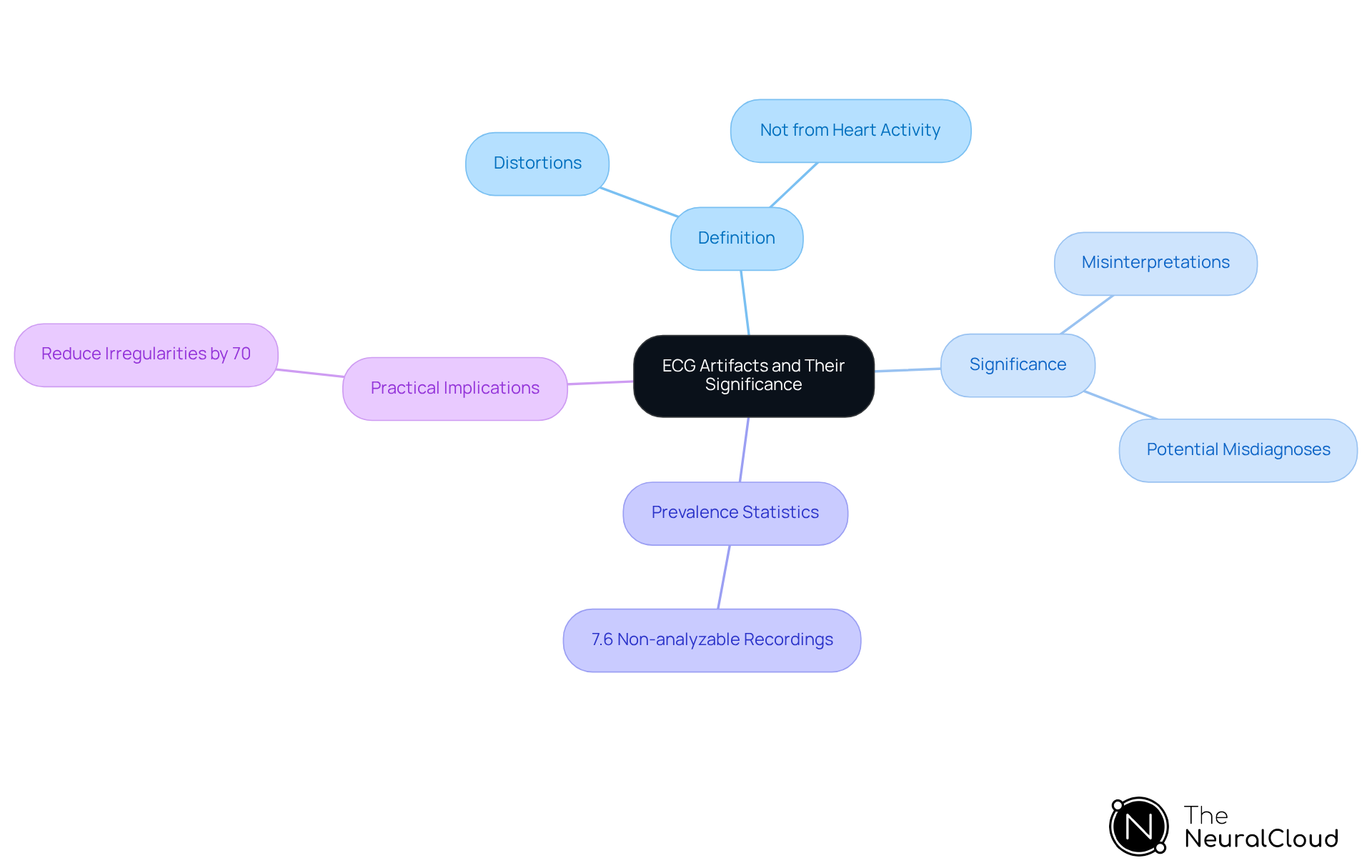
Explore Common Types of ECG Artifacts
Common types of ECG artifacts include:
- Motion Artifacts: These artifacts, caused by patient movement, can appear as irregular spikes or baseline shifts. Often seen in anxious patients or those unable to remain still, they lead to significant misinterpretations of ECG data. Studies suggest that motion disturbances can result in a misdiagnosis rate of up to 45% in automated ECG systems. The 'Neural Cloud Solutions' MaxYield™ platform excels in isolating ECG waves from recordings influenced by motion disturbances, thereby enhancing interpretation accuracy. As the algorithm evolves with each use, it continuously improves its performance.
- Loose Lead Artifacts: These occur when electrodes are not securely attached to the skin, leading to intermittent signal loss or distortion. Correct electrode positioning and skin preparation can diminish these disturbances by up to 70%, significantly improving reading reliability. This technology can of recordings impacted by loose connections, ensuring vital information is not lost.
- Wandering Baseline Artifacts: Resulting from changes in electrode contact or skin impedance, these artifacts cause the baseline to drift. This can obscure critical cardiac events, complicating accurate diagnosis. The advanced noise filtering features of MaxYield™ enable rapid isolation of ECG waves, even amidst wandering baseline artifacts.
- Electromagnetic Interference (EMI): External electrical sources, such as nearby electronic devices, can introduce noise into the ECG data, complicating interpretation, particularly in clinical settings with multiple devices. MaxYield™'s evolving algorithm adapts and improves its performance in noisy environments, effectively addressing EMI challenges.
- Respiratory Artifacts: Breathing movements can create variations in the ECG trace, especially in patients with respiratory issues. These artifacts can simulate cardiac events, leading to possible misdiagnoses. By employing this technology, health tech developers can enhance the evaluation of ECG signals influenced by respiratory interferences, thereby improving diagnostic precision.
- Muscle Tremor Artifacts: Involuntary muscle contractions can produce erratic spikes in the ECG trace, which may be mistaken for arrhythmias. Understanding the artefact on ECG is essential for precise interpretation and efficient patient management. This tool aids in distinguishing between true cardiac events and muscle tremors, thereby enhancing overall diagnostic yield.
Identifying and managing these issues is crucial for enhancing the diagnostic yield of ECG monitoring, especially in wearable devices where motion disturbances are common. Recent research highlights the necessity for advanced processing techniques, such as those provided by Neural Cloud Solutions' MaxYield™, to improve the quality of ECG data in practical situations, including recovering obscured segments of Holter, 1-Lead, and patch monitor recordings.
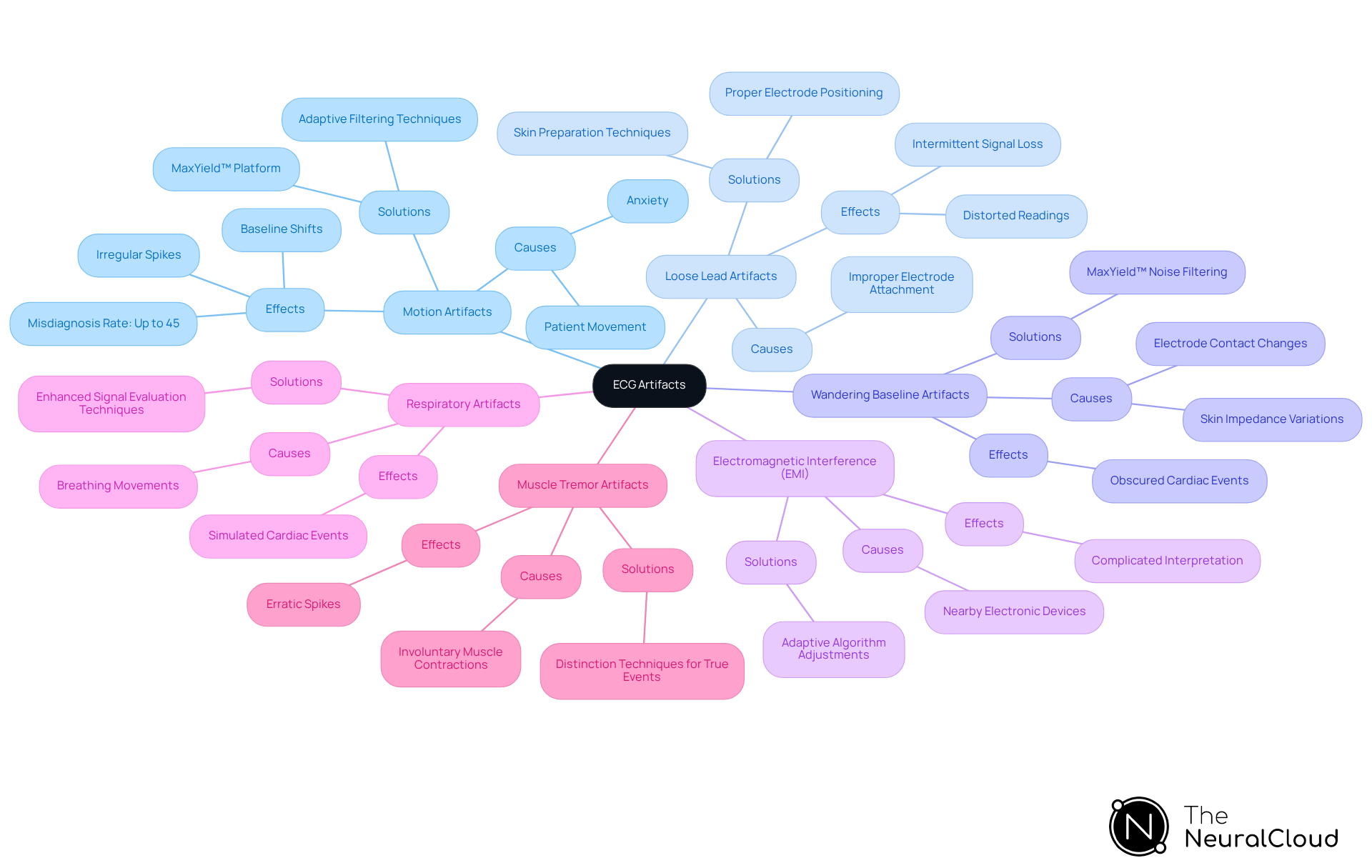
Implement Strategies for Reducing ECG Artifacts
To effectively reduce ECG artifacts, healthcare professionals should adopt the following strategies:
- Proper Skin Preparation: Thoroughly clean and dry the skin prior to electrode placement. This practice enhances electrode adhesion and minimizes impedance, which is crucial for accurate readings of the artefact on ECG. Studies indicate that proper skin preparation can reduce the artefact on ECG and improve signal quality by up to 30%.
- Secure Electrode Placement: To avoid any artefact on ECG, it is essential to secure electrode placement by utilizing high-quality electrodes and ensuring they are firmly affixed to the skin. Proper positioning can significantly decrease loose lead remnants, which are common artefact on ECG that cause interference. Studies indicate that proper electrode positioning can decrease artefact on ECG interference by roughly 25%.
- Minimize Patient Movement: To minimize patient movement and reduce the risk of artefact on ECG, instruct patients to remain still during the recording. Creating a calm environment can alleviate anxiety and movement, further enhancing the artefact on ECG.
- Optimize Equipment Settings: Optimize the equipment settings on the ECG machine to filter out low-frequency noise and reduce artefact on ECG, thereby enhancing clarity. For instance, setting the diagnostic mode to a lower frequency range can effectively eliminate 60 Hz interference, which is often problematic for the artefact on ECG. Utilizing , like that provided by Neural Cloud Solutions' MaxYield™, can further improve signal clarity and reduce the artefact on ECG.
- Regular Equipment Maintenance: Regular equipment maintenance is crucial; perform routine inspections and upkeep of ECG machines and electrodes to prevent equipment-related issues that can lead to artefact on ECG data.
- Educate Staff: Educate staff by providing training for healthcare personnel on recognizing and reducing discrepancies related to artefact on ECG. This education can lead to improved overall ECG quality and a better understanding of artefact on ECG interpretation accuracy. Regular training can enhance staff competency in recognizing artefact on ECG by up to 40%. Utilizing platforms such as similar tools can streamline this process by automating repetitive tasks and providing clear, beat-by-beat data analysis.
Implementing these strategies, supported by the capabilities of MaxYield™, can significantly enhance the reliability of the artefact on ECG readings, ultimately leading to better patient outcomes. By applying these evidence-based practices, clinicians can ensure more accurate clinical interpretations, effectively addressing artefact on ECG recordings and transforming lengthy, noisy signals into clean, crisp outputs.
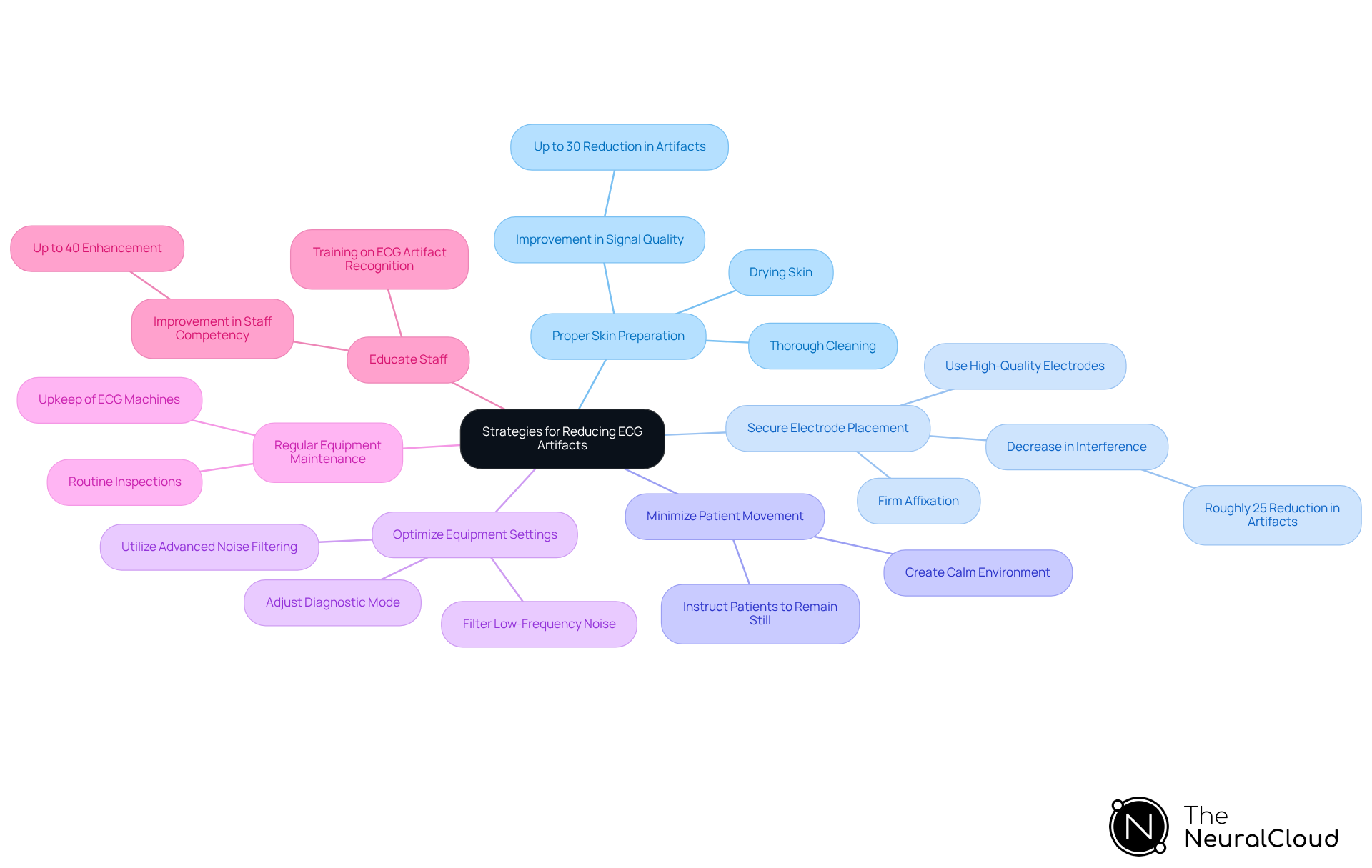
Conclusion
Understanding the complexities of ECG artifacts is essential for accurate cardiac monitoring and diagnosis. These distortions arise from various non-physiological sources and can significantly impact the interpretation of electrocardiograms, leading to potential misdiagnoses and inappropriate treatments. Recognizing the importance of ECG artifacts enables healthcare professionals to differentiate between genuine cardiac signals and misleading data, ultimately enhancing patient safety and diagnostic reliability.
The article highlights several common types of ECG artifacts, including:
- Motion disturbances
- Loose lead issues
- Wandering baselines
- Electromagnetic interference
- Respiratory artifacts
- Muscle tremors
Each type presents unique challenges that can obscure critical cardiac information. Implementing effective strategies—such as proper skin preparation, secure electrode placement, minimizing patient movement, optimizing equipment settings, and regular maintenance—can significantly reduce these artifacts. The integration of advanced technologies, like those provided by Neural Cloud Solutions' MaxYield™, further enhances the clarity and reliability of ECG readings.
In summary, addressing ECG artifacts is not merely a technical necessity but a vital component of ensuring accurate cardiac assessments. By adopting best practices and leveraging technological advancements, healthcare professionals can improve the quality of ECG data, leading to better patient outcomes. Emphasizing the significance of recognizing and managing ECG artifacts fosters a more informed approach to cardiac care, ultimately transforming how clinicians interpret and act on vital heart health information.
Frequently Asked Questions
What are ECG artifacts?
ECG artifacts are distortions in the electrocardiogram signal that do not originate from the heart's electrical activity. They can alter the baseline and waveforms of the ECG, leading to potential misinterpretations of cardiac health.
Why are ECG artifacts significant?
ECG artifacts are significant because they can mimic serious heart conditions, resulting in misdiagnoses and inappropriate treatments. Understanding these artifacts is crucial for accurate cardiac assessments.
How prevalent are ECG disturbances in clinical settings?
Studies indicate that up to 7.6% of ECG recordings may be non-analyzable due to impactful non-physiological disturbances.
How can clinicians differentiate between genuine cardiac events and ECG artifacts?
By identifying anomalies, including artifacts on ECG, clinicians can better distinguish between actual heart rhythms and misleading signals, thereby improving diagnostic accuracy and patient safety.
What is the impact of misinterpretation of ECG artifacts?
Misinterpretation of ECG artifacts can lead to a misdiagnosis rate of 14.3% among medical residents and 45% with automated ECG systems.
What measures can be taken to reduce ECG irregularities?
Correct electrode positioning and proper skin preparation can reduce ECG irregularities by as much as 70%, ensuring more accurate and reliable cardiac data for informed decision-making.
What role do automated algorithms play in detecting ECG artifacts?
Automated algorithms are necessary for consistently detecting ECG irregularities, as they can help reduce the misinterpretation rates and improve diagnostic accuracy.


